|
Staff Newsletter | Minnesota Department of Natural Resources |
|
|
May 5, 2023
In This Issue
|
|
Gov. Tim Walz, Lt. Gov. Peggy Flanagan visit
St. Paul hatchery
Visit highlights needed investments for conservation, outdoor recreation included in the One Minnesota Budget
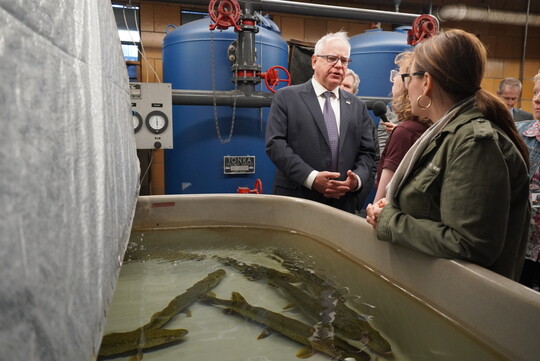 Gov. Tim Walz talks with Hatchery Supervisor Genevieve Furtner and Lt. Gov Peggy Flanagan at the St. Paul hatchery on May 1.
Gov. Tim Walz and Lt. Gov. Peggy Flanagan, and DNR Commissioner Sarah Strommen visited staff at the St. Paul hatchery May 1 ahead of the fishing opener. The facility was the first state-run hatchery established in Minnesota and produces walleye, muskellunge, and tiger muskie to stock lakes through the state.
“Fishing is one of our greatest outdoor traditions, and it makes up a $4.4 billion dollar industry in Minnesota,” Walz said. “Hatcheries are an essential part of conservation and the system we have to ensure the continuation of our fishing and outdoor recreation industry. We need to make investments to repair and improve our aging fish hatcheries and outdoor infrastructure to ensure world-class fishing for decades to come.”
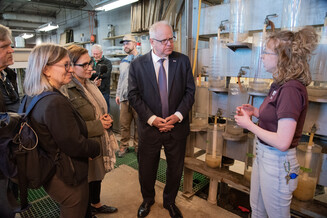
The hatchery is one of 15 operated by the DNR. Like the St. Paul hatchery, most of these facilities were constructed decades ago, and need renewal and modernization. Critical issues, including biosecurity, aging infrastructure, and safety need to be addressed.
Among the One Minnesota Budget proposals for DNR are investments in these facilities, fisheries management, and the lakes and rivers where Minnesotans fish.
|
|
|
May 7-13 is Public Service Recognition Week
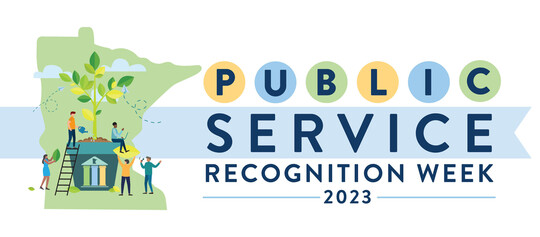 Public Service Recognition Week (May 7-13) is an opportunity to recognize the success of state employees and the power of public service.
All DNR employees have chosen to make public service their careers, and all are working to fulfill the DNR's mission. Please take some time during Public Service Recognition Week to acknowledge the good work done by fellow state agency employees and your DNR coworkers.
Thank you!
Recognizing, recovering from burnout
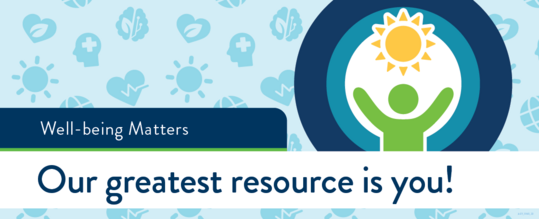 May is Mental Health Awareness Month. Nearly one in five Americans lives with a mental illness. Talking about mental illness and mental health helps to reduce the stigma that sometimes prevents people from seeking support.
When stress becomes too much
“Burnout” has become more prevalent, recognized, and measured over the past several years. The World Health Organization added burnout to the International Classification of Diseases in 2019. While feelings of burnout can come from any area of your life, burnout syndrome is defined by the WHO as a result of chronic workplace stress.
Burnout is defined as having:
- Feelings of energy depletion or exhaustion.
- Increased mental distance from one’s job, or feelings of negativism or cynicism related to one's job.
- Reduced professional efficacy.
Recovering from burnout
Many people treat burnout as stress and just try to push through it, but stress and burnout are not the same. The deep exhaustion, a key symptom that comes with burnout, isn’t curable with rest or vacation. Recovery from burnout generally requires more change, such as lifestyle shifts and professional support. If you think you might be experiencing burnout, consider contacting our Employee Assistance Program, or talking to a doctor or mental health provider.
To recover from burnout:
|
|
|
1. Consider the cause(s).
Gallup research suggests the primary causes of burnout at work are unfair treatment, unmanageable workload, unclear communication, lack of manager support and unreasonable time pressure. It can help to know these common causes so you can recognize them and describe your situation to others when you seek support. It might even help you to identify opportunities to more clearly communicate boundaries or needs.
2. Seek support from a professional, family member or colleague.
A Resolve EAP counselor can meet with you to discuss your situation and help you think through a path forward. They can also help you plan a conversation with your supervisor. Connect with our agency contact Steven Reuter directly or send a message through the EAP Resolve Team email. If you would like support for situations that extend to your personal life, visit the Work/Life Services website or contact a counselor anytime at 1-800-657-3719 or 651-259-3840.
|
|
3. Discuss your workload and priorities with your supervisor.
Work together to identify what must get done and what can wait. Consider short-term and long-term solutions for managing priorities.
4. Keep an open mind as you evaluate and consider your options.
A positive shift will likely require addressing the causes of your burnout and identifying possible changes. As you consider your needs, look into your options under the Family Medical Leave Act. You might qualify for leave under FMLA. For additional information, contact Human Resources or read this FMLA fact sheet.
5. Identify healthy outlets that have helped you in the past.
It might take some time to determine the change you need to recover from burnout. In the meantime, try to identify any strategies or healthy activities that have helped you through challenges in the past that might help you as you determine your next steps.
|
|
Upcoming webinars
-
Mental Health Awareness Webinar on Anxiety Awareness
- May 10 | Link to join is available on the Minnesota Management and Budget well-being webinar schedule website. All employees are welcome. The webinar runs from noon to 1 p.m. Employees enrolled in the State Employee Group Insurance Program are eligible to earn 100 points toward the $70 reduced deductible reward by attending the webinar. Visit the state wellbeing program website to learn more about the reward and how to get started using Virgin Pulse.
-
Help shape an upcoming webinar about burnout
- The Well-being Action Team is planning to host a webinar/discussion for DNR employees on the topic of burnout. Contact Caroline Greeson or Laura Grunloh to share your suggestions.
Contact Laura Grunloh or any Well-being Action Team member if you have questions or want more information.
|
|
Get involved with the Increasing Diversity in Environmental Careers program
If you haven't heard about the Increasing Diversity in Environmental Careers program, here's your chance to learn about the program and get involved!
The program is a collaborative effort between the DNR, the Conservation Corps of Minnesota and Iowa, the Minnesota Pollution Control Agency, and the Minnesota Board of Water and Soil Resources to provide a college-to-career pathway for underrepresented STEM college students. The program consists of three parts – a fellowship with an annual financial award to ensure academic success, a mentorship to connect students with professionals in the field, and an internship to ensure the students have experience in the field before graduation.
Mentorship component: We are always looking for dedicated professionals to serve as mentors in the program. As a mentor to an IDEC fellow, you will have an opportunity to help young adults navigate new experiences and shape their careers. It is your chance to inspire — and be inspired by — motivated, up-and-coming talent in the workforce.
CCMI will host an IDEC mentor session covering roles and responsibilities, mentor matching, and plans for mentors moving forward. The IDEC mentorship session will be on Thursday, June 15, from 3-4 p.m.
Please plan to attend this session if you are interested in working with IDEC students. The session is intended for returning mentors and staff who have not been mentors but are interested in becoming mentors. CCMI will record this session for those who are unable to attend.
If you are new or unfamiliar with the IDEC program, check out the program page to learn more. For additional questions on the IDEC program or to request the mentor session meeting link, contact Mimi Daniel at mimi.daniel@state.mn.us.
|
|
Global Accessibility Awareness Day is May 18
 Learn and experience the impact of inclusion and accessibility
We celebrate Global Accessibility Awareness Day to get everyone talking, thinking, and learning about digital accessibility and inclusion. On May 18, the Minnesota IT Services Office of Accessibility will host a panel discussion and presentation for State of Minnesota employees.
Join these virtual sessions on Microsoft Teams to learn how accessibility can improve how we work and serve Minnesotans:
Panel Discussion: Why digital accessibility matters for me and my work
Thursday, May 18: 10-11 a.m.
People talk about digital accessibility, but what does it mean? How does digital accessibility or the lack of it affect people? Lived experiences of people with disabilities are the most powerful ways to learn why accessibility matters.
The panel will include a variety of individuals with disabilities. They will discuss how they navigate technology, and the difference digital accessibility makes in their work and personal lives.
Presentation: Planning an accessible, inclusive meeting
Thursday, May 18: 2-3 p.m.
Learn how to plan and facilitate online meetings that are accessible to everyone. You’ll come away with tips and behaviors for creating and leading meetings that allow everyone to attend and fully participate. Presenters will also demonstrate useful features in Teams and WebEx.
ASL and CART captioning will be provided. If you have questions about the event, please contact MNIT’s Office of Accessibility. If you have additional accommodation requests, reach out to the Office of Accessibility by Monday, May 8.
Use 2 forms of protection against ticks
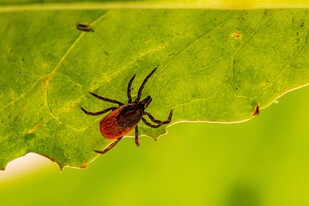
Tick-borne illnesses are diseases transmitted to humans through the bite of infected ticks. The best way to protect yourself from tick-borne illnesses is to avoid tick bites altogether. Most DNR field staff can't avoid areas where ticks live, so DNR policy requires staff to wear two forms of protection whenever they are in the field.
You can use any combination of two of the four identified protection options:
- Permethrin treated clothing outfit (chemical option): a completely treated outfit including socks, pants or shorts and shirt.
- Repellants (chemical option): DEET, Picardin, IR3535.
- Completely sealed clothing outfit (non-chemical option): Seal pants cuffs, tuck pants into socks, gaiters, seal wrists with duct tape, or elastic bands.
- Other non-chemical products (non-chemical option): EPA registered non-chemical repellants. Pay attention to re-application times, as some require application every hour.
If you study and work with pollinators, chemical options might not be feasible. In those cases, you can use options three and four to protect yourself from tick bites while ensuring pollinator health.
|
|
|
Stay safe, avoid distractions while driving

It is important to avoid distractions while driving, especially during inclement weather. Manage your schedule to avoid taking calls while on the road, whether you are in a fleet vehicle or driving your own personal vehicle. Communicating electronically while driving is distracting and unsafe. It is also against the DNR Fleet Policy.
The DNR and other state agencies adopt minimum fleet safety standards to help ensure that our staff are safe while operating vehicles and equipment. In 2019, Gov. Tim Walz signed the Hands-Free Law, which restricts cell phone use while driving to hands-free only. This was a big step to prevent distracted driving and make Minnesota roads safer. The Department of Public Safety Office of Traffic Safety website reminds us, however, that “hands-free is not necessarily distraction-free.”
The DNR recognizes that even in hands-free operation, electronic communication can be distracting to a driver. Our fleet policy is stricter than Minnesota law. DNR staff can’t use cell phones or other electronic devices for voice calls, reading or composing text messages or emails, or conducting other forms of electronic communication while operating vehicles and equipment.
This includes phone calls, Teams meetings, WebEx events, and any other forms of communication. If you must attend a mandatory meeting or take an urgent call, find a safe place to park and take your call from there, or ask to reschedule or postpone your meeting.
You can use a phone or other electronic device for GPS navigation or to play music, but you must program the device prior to placing the vehicle in gear. Do not touch the device while driving. Remember, safety is a value in the DNR. Do not take unnecessary risks while driving.
|
|
|
Attend the electric vehicle showcase at the Minnesota State Capitol
 Get charged up! Join state agencies and partners at the Minnesota Capitol on Wednesday, May 10 from 11 a.m. to 2 p.m. for the 2023 Electric Vehicle Showcase. This is a free event.
The DNR will be showcasing a park ranger Chevy Bolt, two electric side-by-sides, two electric zero-turn riding lawn mowers, and an electric all-terrain track chair.
What: 2023 Electric Vehicle Showcase
When: Wednesday, May 10. Stop by any time between 11 a.m. and 2 p.m.
Where: Minnesota State Capitol, upper mall, 75 Rev. Dr. Martin Luther King Jr. Boulevard, St. Paul.
Why: Highlight the many great options for electric transportation (e.g., sedans, pickups, SUVs, buses, bikes) and equipment (e.g., lawn maintenance)
Who: Everyone! State employees and the public are welcome.
Bike parking and car parking options are available.
|
|
Commissioner’s Awards, listening sessions rescheduled
Due to the winter storm in April, the DNR Commissioner’s Awards and listening sessions in Grand Rapids and Thief River Falls were postponed. Those events have been rescheduled and will now be in Grand Rapids on June 13 and Thief River Falls on June 14. If you were planning to attend one of the April sessions we had to postpone, we hope you’ll be able to attend on one of these new dates. Or, if you haven’t yet attended a session, and one of these dates and locations works for you, we hope to see you there.
Grand Rapids (Bovey)
- June 13, 1-3:15 p.m.
- Barn in the Woods, 27037 Baich Rd, Bovey
Thief River Falls
- June 14, 9-11:15 a.m.
- DNR area office conference room, 246 125th Ave NE, Thief River Falls
Please coordinate with your supervisor before finalizing your plans to attend.
For more information about the awards, check out the Commissioner’s Awards Intranet page.

Disoriented loons, youth mentor hunts,
burned citations, and more
While there are a few ice anglers left, people are shifting their outdoor activities and making their first forays onto open water or preparing for the fishing opener. Off-highway vehicle activity has been kicking into high gear and conservation officers are spending time attending safety education classes.
The following are several highlights from the weekly Conservation Office reports.
April 17
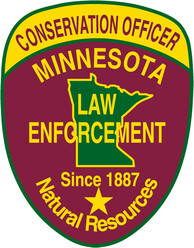
CO Shane Zavodnik (Virginia) spent time patrolling the Rainy River. Walleye fishing was extremely slow due to poor water clarity, but some anglers had success catching sturgeon. Zavodnik also attended Wisconsin Officer Breidenbach’s and Officer Scheel’s funeral as an Honor Guard member.
CO Adam Stennett (Sauk Rapids) spent most of the week working the turkey opener. He fielded a call of an injured loon on the University Avenue Bridge in St. Cloud. Stennett caught the disoriented loon and returned it safely to the Mississippi River.
CO Matt Loftness (Marshall) reported poor weather conditions made for a slow start to the turkey and stream trout seasons. Along with a Lyon County Sheriff’s Office deputy, Loftness captured a beaver that was on a walkabout in the middle of Tracy. Using a rope and a pair of gloves, the officers relocated the beaver to Swift Lake.
|
April 24
CO Bill Landmark (Pelican Rapids) spoke to 15 youth at a Pheasants Forever turkey hunting event. The youth were paired with mentors for a hunt and success rates were good. Landmark also handled seasonal equipment maintenance and seized incidentally taken otters.
CO Andy Schmidt (Duluth West) attended the funeral for Deputy Owen in Pope County as part of the DNR Honor Guard team. He also handled a complaint of parties squatting on state property and multiple illegal-dumping complaints.
CO Jim Guida (Brainerd) issued a citation for a violation of a burning permit after seeing a large, active burn of prohibited materials, including painted boards, pressed board furniture, particle board, cement blocks, aluminum cans, steel frames and cardboard. The following day, Guida received an email from the area forester who had issued the individual the burning permit. The forester said that the permittee had called and asked for another copy of the citation Guida had issued because after Guida left, the citation blew into the large fire and burned up.
|
|
Join the DNR’s softball team

If you’re in the metro area (or willing to drive), join the DNR’s softball team – the Grand Slamphibians!
The team will be playing in the state of Minnesota softball league this summer, on Tuesday evenings from June 6 to Aug. 15 at the Dunning Sports Complex in St. Paul (near Concordia University). Games will start at either 5:45 or 7 p.m.
The goals of the league are to build camaraderie with fellow state and DNR employees, show good sportsmanship, and have fun! Anyone who wants to can have a role on the team and you can still be on the team even if you can only make some games and not all.
There is a cost to play in the league, expected to be about $20 depending on how many people sign up to play. Optionally, t-shirts can be purchased featuring the Grand Slamphibians logo.
To sign up for the team, email team captains Kenny Blumenfeld, Maggie Snyder and Nathan Moe by May 12 at noon. If you've already expressed interest in joining the team, you don't have to send another email.
|
The cycles of life lead to a national award
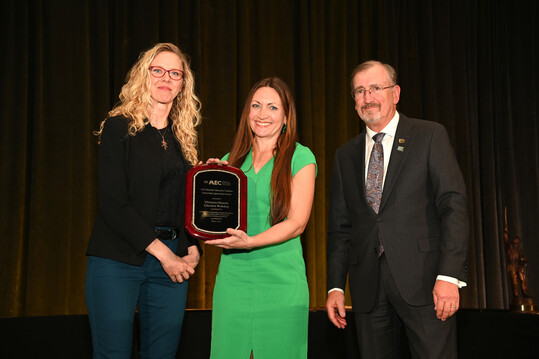 In February 2023, Sara Welna (center) accepted the Minerals Education Coalition Partnership Appreciation award from the Society for Mining, Metallurgy, & Exploration.
By Mollie Gudim, Lands and Minerals information officer
Just like a boomerang returns to its starting point, people can come back to a previous place, too.
The sentiment is certainly true for Sara Welna, whose professional path with the DNR is curved, rounding its way between routine and change and back towards the space where she belongs.
On Central Office’s fourth floor, Welna occupies a role she’s filled multiple times, once as a DNR volunteer and twice as a DNR employee. Last fall, she rejoined the Lands and Minerals Division as administrator for the Minnesota Minerals Education Workshop, in a part-time role that allows her to harness her extensive geology background and industry expertise to coordinate the annual interactive learning experience.
Nearly 100 K-12 earth science teachers come from the far reaches of Minnesota to attend the multi-day workshop, which is a large partnership between the Minnesota Center for Mineral Resource Education, the Earth Science Teachers Association, several agencies like the DNR, as well as academia including the Natural Resources Research Institute, the Minnesota Geological Survey, and industry representatives. The workshop is tactile and multi-sensory, allowing teachers to be hands-on in a classroom or outside with MMEW instructors on guided examinations of rock formations, minerals, and soils to gain deeper understanding of Minnesota’s geologic history and mineral resources.
“MMEW is an important collaboration between people within the geologic community who are eager to help enhance resources for geosciences education,” said Welna, who has been involved with the event since college. After working in industry and consulting for years, she’s back planning the 24th annual offering of the workshop. “The mark of a successful workshop is when teachers feel empowered to head back to their classrooms with lessons for students.”
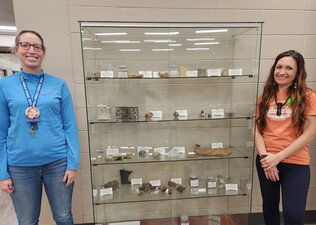
Last summer, a young teacher who barely scratched the surface of earth sciences with her sixth-grade students came away from MMEW with a brand-new rocks and minerals case for her classroom. Welna personally delivered the rock case to the excited learners, along with a presentation about geology and Minnesota’s natural resources.
The demonstration to middle schoolers wasn’t the first time Welna said "yes" to creating engaging activities to help kids learn – and it won’t be last.
“I’m most passionate about fostering experiences with educational benefits,” she said, reminiscing about her roles within industry which enabled opportunities to bring groups of scouts and teachers to aggregate quarries. “I’m rewarded any time I can create hands-on learning moments for people.”
Earlier this year, Welna’s expertise in developing and coordinating curriculum for teachers and students was nationally recognized as she accepted the Minerals Education Coalition Partnership Appreciation award from the Society for Mining, Metallurgy, & Exploration. The prestigious award acknowledges MMEW’s decades-long contributions to connecting geology and minerals to education and inspiring the next generation of geoscientists.
“I humbly received this award on behalf of an incredibly talented team, and the recognition has multiple meanings for me,” Welna said. “A couple years ago, I was in an accident that resulted in my traumatic brain injury. Until recently, extreme sensitivity to sound, light, noise, and motion kept me from working and doing the things I enjoy. It’s been a long road back, and I’m so proud of who I am today. Receiving an award and recognition from my colleagues is a powerful accomplishment, both professionally and personally.”
Several tracks of her life have taken unexpected departures and returns, but Welna has remained calm and focused through it all.
“My family and I turn to nature to help us understand the cycles of life,” she said.
For five years, Welna has emersed herself in beekeeping, and witnessing interactions between the insects has taught her about the value of teamwork and to expect the unexpected.
“I’ve overwintered several colonies, and every year, I never know how it’s going to work out,” she said.
Sometimes, you have to start again at the beginning and trust the process.
|
|
|
Prairie chicken Window on Wildlife cam goes live
Window on Wildlife is a collaboration between
DNR and MNIT at DNR staff
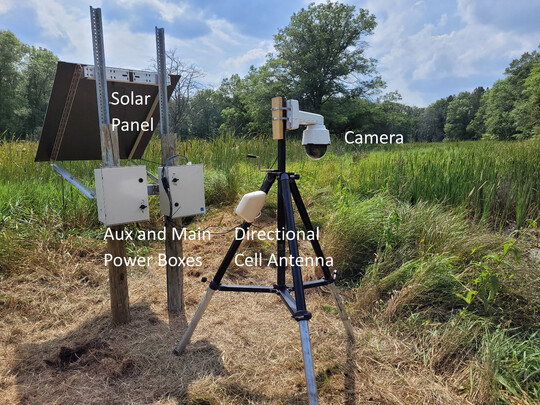 In 2021, the wildlife section in Fish and Wildlife set out to create a portable, streaming camera to highlight multiple species across Minnesota on the DNR’s website and YouTube channel. The DNR’s Window on Wildlife is in its second year of operation but visitors to the DNR website can now view greater prairie chickens on a northwestern Minnesota lek.
Section of wildlife staff worked with MNIT at DNR staff to purchase and test the necessary equipment throughout 2021. In 2022, a wildlife web camera steering team was formed to help deploy and manage the equipment purchased. The team successfully deployed the camera equipment to three different locations in 2022, highlighting three different habitat types and multiple species. Those locations included: a sharp-tailed grouse lek in early spring 2022 in Aitkin County; a wood duck nest box in early summer 2022 on the Carlos Avery Wildlife Management Area; and a wetland flood control impoundment in Grant County in the fall of 2022.
The web streaming content has allowed FAW staff to use "show" rather than "tell" to potentially have Minnesotans be more aware of the benefits that come with habitat restoration and conservation.
This steering team is a great example of DNR staff working with MNIT at DNR staff to implement new technology to help promote natural resources to the public. The team will take lessons learned from 2022 to improve the streaming experience and bring additional locations and species to the public in 2023 and beyond.
Technology highlight
The MNIT at DNR members of the team built on their knowledge of DNR’s existing web streaming camera equipment to create something new and innovative for this project. Unlike the existing streaming equipment, like the EagleCam, the wildlife web camera needed to be completely off grid with no hardwire power or internet connection and to be mobile to move around the state.
This required finding a combination of hardware and software to meet the project’s needs. A contractor provided a waterproof box with the needed power management equipment, including Lithium-Ion batteries, solar panel array and the needed power management electronics.
MNIT staff installed the needed networking and cellular equipment to support network connectivity. The camera also takes advantage of a new software app called CamStreamer, which is installed directly on the camera and allows streaming directly to YouTube. This eliminates the need to connect the camera to the DNR network to send the video signal back to a computer in DNR Central Office to encode the video feed to YouTube. The camera set up was designed to support different types of cameras, employing both a pan/tilt/zoom camera and a smaller, wide-angle camera (used for the wood duck house observation in 2022.)
Current camera deployment
|
On May 1, the camera was deployed to a new location in northwestern Minnesota to stream footage from a prairie chicken lek.
Chickens are most active from dawn until around 9 a.m. and one to one-and-a-half hours before sunset. Early morning is the best time to view.
As of Friday at 7:30 a.m., the camera had 1,800 views since going online May 1.
|
|
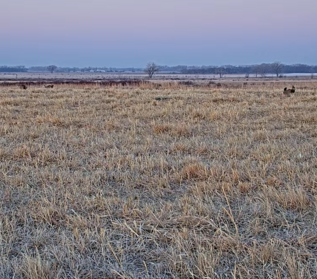 |
Team members:
Team Leads: Derek Frost and Kelly Pharis
|
|
|
FAW staff:
- Rob Baden – prairie chicken deployment.
- Nicholas Brown – on the ground location support.
- Marshall Deters (retired) – equipment and location support. Special thanks to Marshall, who led the effort in 2021 to purchase and test the equipment before his retirement from the DNR.
- Derek Frost – location and equipment support. Special thanks to Derek for helping to redesign the camera equipment setup to make it more portable.
- Jamie Gangaware – program level and financial support.
- Kelly Pharis – location and equipment support.
- Jess Roberts – web content and location support.
- Lindsey Shartell – web content and location support.
- Pete Takash – webpage creation and content management.
|
|
MNIT staff:
- Bruce Anderson – software support, team administration, web content support.
- Jed Becher – software, web content support, YouTube.
- Andra Mathews – equipment and software support.
- John Wucherer – network and equipment support.
|
|

Assistant Area Wildlife Manager Hayley Larson
 Enjoying an outdoor life for work and fun
By Julie Forster, Minnesota Conservation Volunteer associate editor
|
|
|
A tired 4-year-old Hayley Larson slept in the truck on the way to the slough and then stumbled in the dark trying to keep up with her dad and grandpa for what felt like miles as they made their way to the duck blind. With her dad’s jacket wrapped around her, she sat on the cattails and waited for the sun to rise and the ducks to start falling.
“That was really my start in the outdoors,” she said, recalling her first experience in the duck blind. Larson now relishes in those memories on her own morning trips to the duck slough – and in the woods and on the prairie, enjoying an outdoor life both in the field for work and for fun. She is just a few weeks into a new job as the Karlstad assistant area wildlife manager in northwestern Minnesota.
Today, she soaks in her moments in the field by taking extensive notes in the blind or the stand and then journaling her experience in the truck on the way back home or right before bed at night. Her notes might turn into a story for an outdoor publication. Her stories about her outdoor pursuits have been published in the magazine Outdoor Women, and she was selected as one of six “ambassadors” providing outdoors coverage for Northland Outdoors.
|
 Title: Assistant area wildlife manager
Work location: Karlstad
Been at the DNR: Since 2019
Education: B.S. Natural Resources Management and Aviation, University of Minnesota Crookston
Fun fact: "I earned my SEL commercial pilots license on my 21st birthday."
|
|
|
“Honestly, I most enjoy writing for the aspect of reflecting,” she said. “Most of these I wrote for myself as a way to remember a special feeling or moment.”
She also hopes to encourage other people and newcomers to outdoor activities like hunting, foraging, or fishing to give it a try.
“Some of the purpose in sharing my experience, is I hope to inspire others and give them some tips to boost their confidence in the field," she said. "You don’t have to have what some would term a 'successful outcome' for it to be a unique experience to you.”

Growing up in the Twin Cities, Larson gained appreciation for the natural environment in part by accompanying her grandfather to the Cloquet Forestry Center where he worked. Those visits impressed upon her a desire to spend her career conserving and protecting lands and wildlife.
In college, she studied natural resources management and aviation and then worked for the U.S. Fish and Wildlife Service and Conservation Corps. In 2019, Larson joined the DNR as an Ecological and Water Resources and wildlife general laborer based in Thief River Falls. In that field-focused, hands-on job, her work experience was diverse. She fought fires in the Boundary Waters Canoe Area Wilderness, assisted with prescribed fire operations, monitoring projects, wildlife surveys, and helped with Chronic Wasting Disease sample collection, in addition to making sure hunter walking trails on wildlife management areas were mowed in time for game season.
In her new position, Larson assists with the implementation of habitat management projects on wildlife management areas and other public lands, continues to conduct wildlife population surveys and assists with prescribed fire planning and implementation. However, a very large chunk of her position involves elk habitat and population management, securing funding for habitat projects and continuing the conversation and assisting with the possibility of relocating elk to the northeast.
Alongside Karlstad Area Manager Jason Wollin, Larson will work with other staff from the DNR, the Fond du Lac Band, the Red Lake Band, the University of Minnesota and Rocky Mountain Elk Foundation in preparation for this upcoming hunting season and with the Fond du Lac Tribe on a proposal to relocate some elk from the northwest to the northeast where the Fond du Lac reservation is located.
“The hope is that, if we are able to relocate some elk and establish a herd there, over the progression of time… eventually elk could be a staple on the landscape in Minnesota as they were once were," Larson said. “I’m just dipping my toes in and learning as much about the history and management of our elk herds in the northwest as I can right now and trying to prepare for the years to come."
|
|
|

Walleye history at Waterville
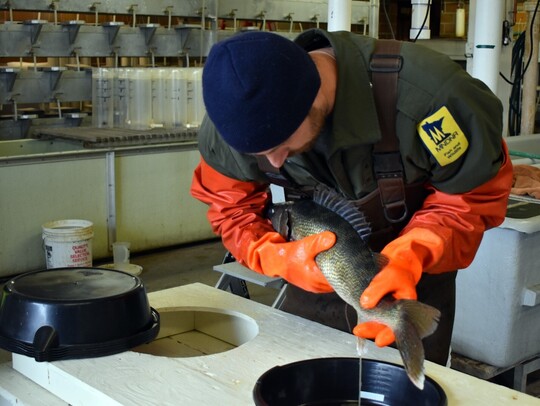
Waterville Hatchery Lead Specialist Andrew Scholten extracts eggs from a female walleye in April. What makes that fish special? It is the first locally-sourced walleye to be used for the walleye egg take since 1992!
The recently-discovered Lower Mississippi strain of walleye has better reproduction and survival rates in southern Minnesota waters. The event holds promise for a possible second source of LMS walleye, which could increase efficiencies within DNR fisheries.
|
|
Submit to Spotlight
Send Spotlight articles and photos to newsletter.dnr@state.mn.us.
Next Spotlight is scheduled for May 19. Deadline for content is May 17.
|
|
|
|
|